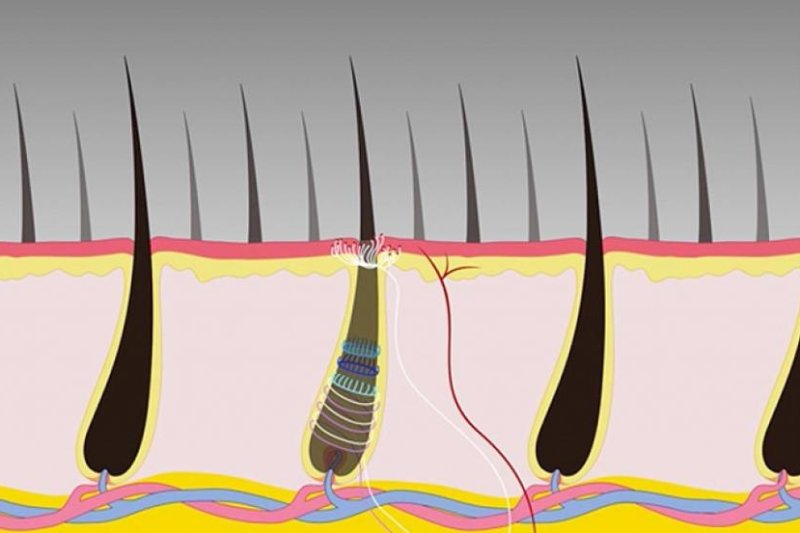National Institutes of Health researchers have identified a previously unknown class of sensory neurons that can be actively stimulated by just pulling one single hair. Photo courtesy Jeremy and Nichole Swan
Aug. 16 (UPI) -- A recent study by the National Institutes of Health has identified a new class of sensory neurons responsible for mechanical pain.
"Scientists know that distinct types of neurons detect different types of sensations, such as touch, heat, cold, pain, pressure, and vibration," Alexander Chesler, principal investigator with the National Center for Complementary and Integrative Health's, Division of Intramural Research, said in a news release. "But they know more about neurons involved with temperature and touch than those underlying mechanical pain, like anatomical pain related to specific postures or activities."
The study, published today in Neuron, combined functional imaging, recordings of electrical activity in the brain and genetics to examine how neurons respond to a variety of stimuli in mice studies.
Researchers applied temperature stimulation, gentle mechanical stimuli such as air puff, stroking or brushing, and high-threshold mechanical stimuli such as hair-pulling or skin-pinching to the hairy skin of mice cheeks to identify a polymodal nociceptor, a type of pain fiber that responds to heat and pinching.
They also identified a previously unknown type of neuron named the high-threshold mechanoreceptors, or circ-HTMRs, that responded significantly to hair pulling.
Researchers found that the unusual nerve terminals in these neurons made lasso-like structures around the base of each hair follicle.
"One interesting feature of these neurons is that they have large spatially organized receptive fields, yet can be activated by pulling a single hair," Chesler said. "Their electrical properties enable them to signal much more rapidly than normal pain fibers and to keep firing as long as the hair is being pulled."
The team did additional experiments on the mice and found that direct activation of circ-HTMRs was enough to elicit protective behaviors in the mice.
"These findings add insight into how the somatosensory system encodes pain," NCCIH Director Dr. Josephine Briggs, said. "Learning more about the distinctive features of circ-HTMRs could contribute to rapid, accurate localization of brain regions activated in mechanical pain, and ultimately to the rational design of new approaches to pain therapy."















